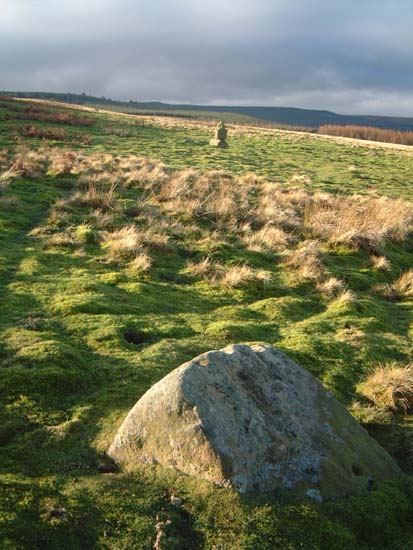8digit grid ref: NT 4701 0624
Info courtesy of RCAHMS
“This stone circle is situated on a natural shelf at a height of 950 ft, near the summit of Burgh Hill. Sub-oval on plan, it measures 54 ft from NE to SW by 44 ft transversely and comprises twenty-five stones, thirteen of which are erect while the remainder are recumbent. They are all comparatively small slabs (ranging in height from a few inches to 2 ft 8 ins) and most of them have a broad face aligned on the perimeter of the setting.”
“Only one of the recumbent stones, on the SW side, is appreciably larger in size, measuring 5 ft in length by 2 ft 3 ins in width. It is recorded that the circle “has been well explored, but yielded nothing of a sepulchral nature.”
“An egg-shaped ring of many stones. It has been ruined but alone among its little stones a 1.5m pillar remains, fallen, at the SW (238) opposite a 1.1m long, low, thin slab in appearance like a Cork recumbent stone. This ‘recumbent’ and the prostrate pillar are on the main axis of the site.”




































